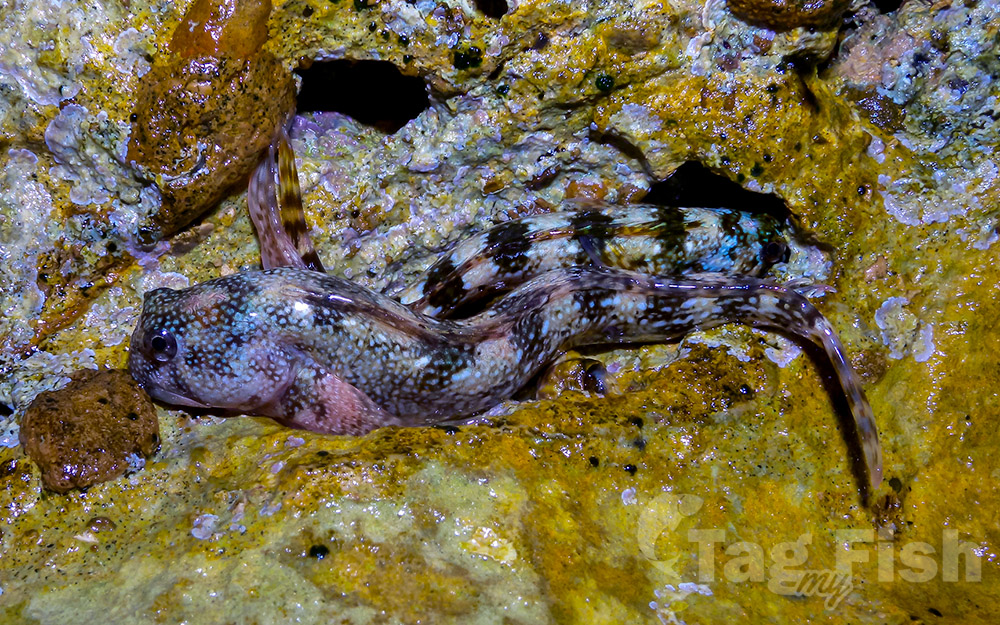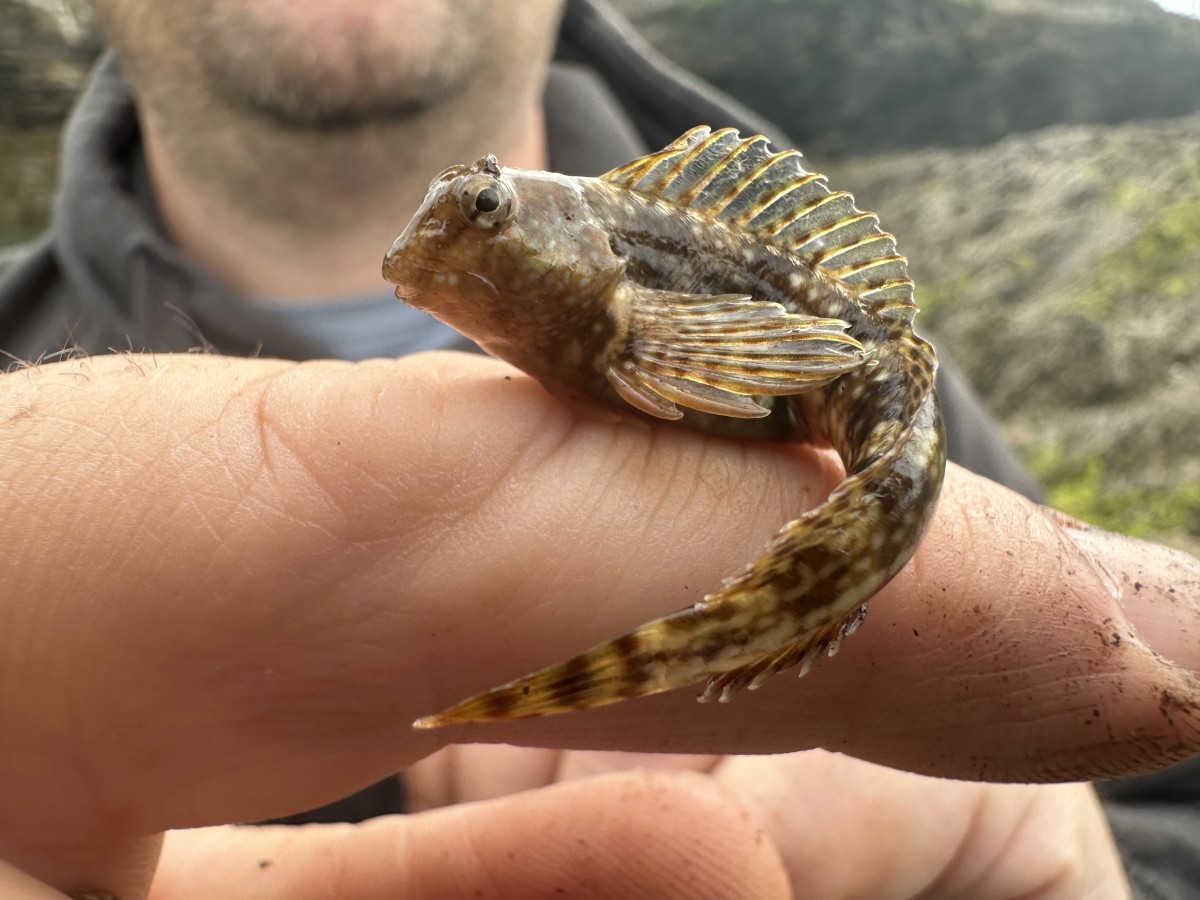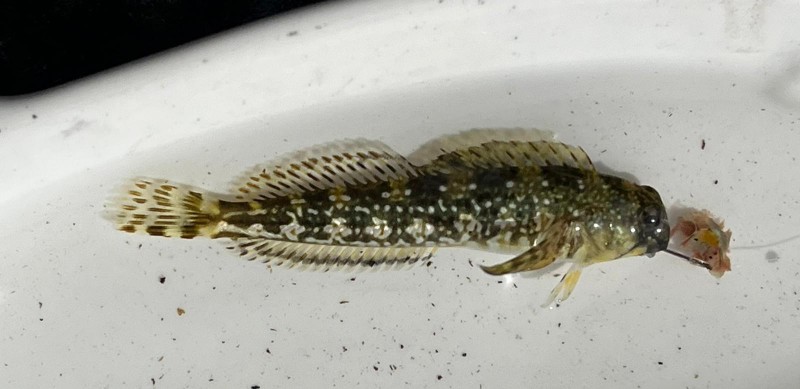Montagu’s blenny
(Coryphoblennius galerita)

Classification
General data
Montagu’s blenny (Coryphoblennius galerita), also known as the capuchin blenny, is a species of combtooth blenny found in the intertidal zones of the eastern Atlantic ocean from England to Madeira and the Canary Islands as well the Mediterranean Sea, the Black Sea and the Sea of Marmara.
This species prefers rocky shores with much wave action.
This species grows to a length of 7.6 centimetres (3.0 in) SL.
It is the only species in the genus Coryphoblennius.
Montagu’s blenny is small and has an elongated body which has no scales, its eyes are set on top of the head and its mouth points downwards. The background colour is pale brown marked with olive-green vertical stripes and light blue spots.
There is a single dorsal fin that runs along the total length of its body with an obvious notch part of the way along. There is fringed, fleshy crest situated between its eyes and, in at least in Britain and Ireland, this feature distinguishes Montagu’s blenny from the other species present. The fleshy crest continues along the dorsal surface of the blenny as a series of short fleshy tentacles. It has large pectoral fins which are used to grip on to rock surfaces and resemble limbs. The fish in the Atlantic specimens often have dark-spots compared to Mediterranean populations. When spawning the males become uniformly dark or show a marbled pattern and have a white upper lip.
Montagu’s blenny occurs in the north eastern Atlantic Ocean and the Mediterranean. Its range in the Atlantic extends from southern Ireland and the southern coasts of Great Britain south to Portugal and along the west African coats as far as Guinea, It also occurs in the Macaronesian archipelagoes of Madeira, the Azores and the Canary Islands. It is found on all Mediterranean coastlines and into the Sea of Marmara, and the western Black Sea, it has been recorded from Black Sea coast of central Turkey and it may occur in the eastern Black Sea but this is unconfirmed.
















